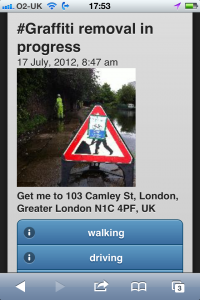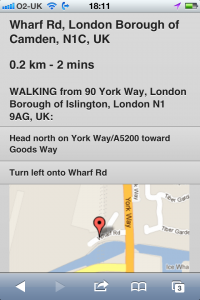There’s a reason that the world fully embraced HTTP but not Gopher or Telnet or even FTP. That’s because the power of the Internet is best expressed through the concept of a network, lots of interlinked pieces that make up something bigger rather than tunnels and holes that end in a destination.
The World Wide Web captured people’s imaginations, and then everything changed.
I was reminded of this while reading a recent interview with Tim Berners-Lee (via TechCrunch). He talked a bit about the power of linking data:
“Web 2.0 is a stovepipe system. It’s a set of stovepipes where each site has got its data and it’s not sharing it. What people are sometimes calling a Web 3.0 vision where you’ve got lots of different data out there on the Web and you’ve got lots of different applications, but they’re independent. A given application can use different data. An application can run on a desktop or in my browser, it’s my agent. It can access all the data, which I can use and everything’s much more seamless and much more powerful because you get this integration. The same application has access to data from all over the place…
Data is different from documents. When you write a document, if you write a blog, you write a poem, it is the power of the spoken word. And even if the website adds a lot of decoration, the really important thing is the spoken words. And it is one brain to another through these words.”
Data is what matters. It’s a point of interest in a larger context. It’s a vector and a launchpad to other paths. It’s the vehicle for leverage for a business on the Internet.
What’s the business strategy at the data layer?
I have mixed views on where the value is on social networks and the apps therein, but they are all showing where the opportunity is for services that have actually useful data. Social networks are a good user interface for distributed data, much like web browsers became a good interface for distributed documents.
But it’s not the data consumption experience that drives value, in my mind.
Value on the Internet is being created in the way data is shared and linked to more data. That value comes as a result of the simplicity and ease of access, in the completeness and timeliness, and by the readability of that data.
It’s not about posting data to a domain and figuring out how to get people there to consume it. It’s about being the best data source or the best data aggregator no matter how people make use of it in the end.
Where’s the money?
Like most Internet service models, there’s always the practice of giving away the good stuff for free and then upselling paid services or piggybacking revenue-generating services on the distribution of the free stuff. Chris Anderson’s Wired article on the future of business presents the case well:
“The most common of the economies built around free is the three-party system. Here a third party pays to participate in a market created by a free exchange between the first two parties…what the Web represents is the extension of the media business model to industries of all sorts. This is not simply the notion that advertising will pay for everything. There are dozens of ways that media companies make money around free content, from selling information about consumers to brand licensing, “value-added” subscriptions, and direct ecommerce. Now an entire ecosystem of Web companies is growing up around the same set of models.”
Yet these markets and technologies are still in very early stages. There’s lots of room for someone to create an open advertising marketplace for information, a marketplace where access to data can be obtained in exchange for ad inventory, for example.
Data providers and aggregators have a huge opportunity in this world if they can become authoritative or essential for some type of useful information. With that leverage they could have the social networks, behavioral data services and ad networks all competing to piggyback on their data out across the Internet to all the sites using or contributing to that data.
Regardless of the specific revenue method, the businesses that become a dependency in the Web of data of the future will also find untethered growth opportunities. The cost of that type of business is one of scale, a much more interesting place to be than one that must fight for attention.
 I’ve never really liked the “walled garden” metaphor and its negative implications. I much prefer to think in terms of designing for growth.
I’ve never really liked the “walled garden” metaphor and its negative implications. I much prefer to think in terms of designing for growth.
Frank Lloyd Wright designed buildings that were engaged with the environments in which they lived. Similarly, the best services on the World Wide Web are those that contribute to the whole rather than compete with it, ones that leverage the strengths in the network rather than operate in isolation. Their existence makes the Web better as a whole.
Photo: happy via








